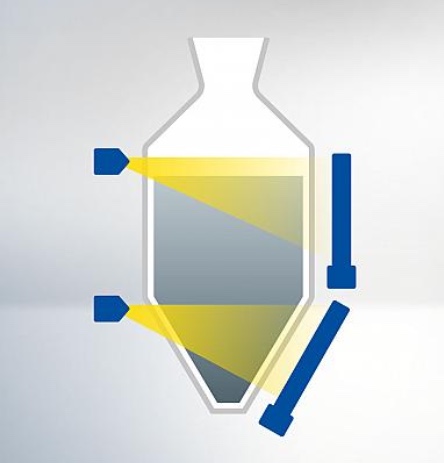BCMT™-500 and BCMT-500-LRT
Too often, profitability is lost because refiners lack adequate accessibility and bottoms cracking power in their catalyst. Ketjen has developed BCMT-500 additive, which features high accessibility and provides powerful functional bottoms conversion sites. BCMT-500 delivers many pre-cracking sites and high metals tolerance, while making up only a small fraction of the circulating catalyst inventory.
Contaminant metals such as nickel, sodium, vanadium and calcium destroy the acidic cracking sites of the catalyst inventory and catalyze dehydrogenation reactions. Modest amounts of calcium and inorganic iron form layers around the catalyst particle that act as barriers between the feed and the active sites. As a result, the accessibility, as measured by the Ketjen Accessibility Index (KAI), drops. Consequently, the larger feed molecules are no longer adequately converted once the KAI drops below its critical value. Left untreated, severe cases of iron and/or calcium poisoning result in conversion losses as high as 10 vol% (see Figure 1).
Sponsor:
Categories:
-
Unprecedented upgrading of residue in FCC. FCC units using conventional FCC catalysts are severely limited when diffusion constraints control conversion and bottoms upgrading, for example, in heavy-feed and/or short-contact-time operations. Even with high catalyst addition rates, bottoms conversion, ...
-
The solution for FCC fluidization and circulation problems. SMOOTHFLOW from Ketjen offers a solution to FCC unit fluidization and circulation problems. Fluidization problems sometimes begin suddenly, often as the result of an unexpected process upset causing significant catalyst losses and possible mechanical ...
-
Optimal SOx reduction without rare earth for partial- and full-burn units. SOx reduction additives are designed to capture and remove the oxidized sulfur compounds present in the FCC unit regenerator and release them in the FCC riser. On release, the sulfur exits the FCC unit as hydrogen sulfide, along ...
-
DURASOx™ SOx reduction additive is the culmination of intensive development work focusing on obtaining the most attrition-resistant SOx additive on the market without any performance compromises. It follows in the footsteps of Ketjen’s longest-marketed SOx additive, KDSOxTM, in that both take advantage ...
-
DuraZOOM™ - industry-leading olefin and octane enhancement
DuraZOOM additive is the latest in a long line of light olefins and octane enhancers manufactured by Ketjen. ZSM-5 additives were developed by Mobil Oil Corporation and first used in 1983 as octane enhancers necessitated by the phasing out of tetraethyl lead. Since then, their use has grown enormously ...
-
ELIMINOx™ - flexible combustion promotion with lower NOx emissions
ELIMINOx™ is Ketjen’s most widely used non-platinum-containing combustion promoter. More than 20 refineries around the world have used it to provide excellent carbon monoxide (CO) oxidation and to control afterburn with significantly lower NOx emissions when compared with traditional platinum promoters. ...
-
AMBER™ catalysts are frequently used, high-quality catalysts from the Ketjen portfolio and are manufactured using ADM-20 matrix technology, which is common to its high-accessibility catalysts. AMBER™ is the benchmark for maximum transportation fuels against which all other gas oil catalysts are measured. In ...
-
Too often, profitability is lost because refiners lack adequate accessibility and bottoms cracking power in their catalyst. Ketjen has developed BCMT-500 additive, which features high accessibility and provides powerful functional bottoms conversion sites. BCMT-500 delivers many pre-cracking sites and ...
-
MD FCC Catalysts - boosting middle distillates production in FCC
Maximizing middle distillates in FCC units. A range of catalysts is available from Ketjen for increasing the production of middle distillates in the FCC process while retaining the many other attractive features of this versatile bottom-of-the-barrel upgrading process. The key to success is to adjust ...
-
KOC-15™ Flexible and effective way to lower afterburn in your FCC unit
KOC-15™ additive is Ketjen’s most widely used platinum-based combustion promoter, and is commercially proven to provide many refiners with a reliable, low-cost and flexible solution to afterburn and excess carbon monoxide (CO) emissions. In the regenerator, the coke (carbon) on the spent catalyst ...

















